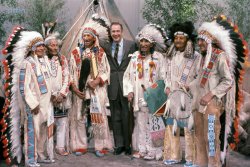
MAY CONTAIN NUTS

Search Shorpy
SHORPY ART

Framed or unframed, desk size to sofa size, printed by us in Arizona and Alabama since 2007. Explore now.
Join and Share
Ad-Free Shorpy
Shorpy is funded by you. Patreon contributors get an ad-free experience.
Learn more.

Recent comments
- Alas, hidden from view
- Exclusive pump
- Details, Details
- What's that building to the left of the tower?
- Coal Barges
- Bromo-Seltzer
- Inner harbor
- The Basin
- What a headache!
- Giant stepladder?
- Baldwin 62303
- Baldwin VO-1000
- Cold
- No expense spared
- Tough Guys
- Lost in Toyland
- And without gloves
- If I were a blindfolded time traveler
- Smoke Consumer Also Cooks
- Oh that stove!
- Possibly still there?
- What?!?
- $100 Reward
- Freeze Frame
- Texas Flyer wanted
- Just a Year Too Soon
- WWII -- Replacing men with women at the railroad crossing.
- Yes, Icing
- You kids drive me nuts!
- NOT An Easy Job
Member Photos
The Shorpy
Print Emporium
Print Emporium
Search Shorpy
Search results -- 30 results per page
- Dr. Springs: 1939
- ... as a medical doctor. He founded the first African-American Boy Scout Troop in the nation. Dr. Springs was awarded the Joseph A. ... sense of humor ... it seems Dr. Springs was African American. Andrew W. Springs was born in 1869 and died in 1944. In addition to ... the community about hygiene, maintained his museum of Indian and other artifacts, even ran for statewide office twice in the ... Posted by Dave - 07/14/2020 - 11:31am -
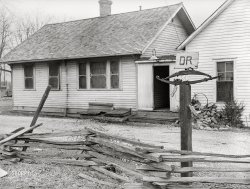
- Major Medical: 1920
- ... be trained as a nurse but no one in Canada would train "an Indian" so she applied and was gladly received by the New Rochelle nursing ... from the Army in 1937 and then served as president of the American Nurses Association from 1938 until 1944. Stimson returned to the Army ... Posted by Dave - 08/28/2012 - 5:58pm -
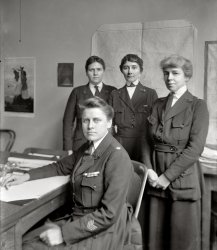
- Redwater in Washington: 1917
- ... left.
Head dresses are among the most misunderstood American Indian symbol. Only plains tribes wore them, and almost always only for ... Posted by Dave - 10/27/2019 - 3:25pm -
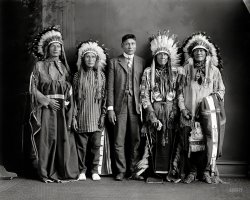
- Indians... Back to the Future
- ... was trying to make a statement about the young American Indians of their day, looking to the future and using a modern machine ... is, that only one looks like he might be a native American Indian. There are three of them and only one bike so I don't think they are ... Posted by Phadrus - 07/12/2011 - 7:36pm -
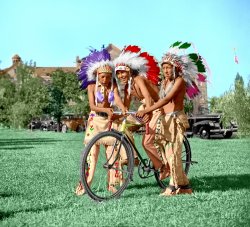
- Molalla Buckeroo: 1936
- July 4, 1936. "Warm Springs Indian at Molalla Buckeroo," the Fourth of July rodeo in Molalla, Oregon. ... final humiliation The classic features of this Native American call to mind the profile on the buffalo nickel (1913-1938) by sculptor ... Posted by Dave - 10/27/2019 - 3:28pm -
![Molalla Buckeroo: 1936 July 4, 1936. "Warm Springs Indian at Molalla Buckeroo," the Fourth of July rodeo in Molalla, Oregon. Medium-format nitrate negative by Arthur Rothstein for the Resettlement Administration. View full size.
The final humiliationThe classic features of this Native American call to mind the profile on the buffalo nickel (1913-1938) by sculptor James Earle Fraser.
[The resemblance is rather striking, although according to Fraser the depiction is a composite rather than a specific individual. - tterrace]
(The Gallery, Arthur Rothstein, Native Americans)](https://www.shorpy.com/files/images/SHORPY_8b28018a.thumbnail.jpg)
- Apple Story: 1925
- ... be quite the stunner and I think, was representative of an American Indian woman.
(The Gallery, Natl Photo) ... Posted by Dave - 07/09/2012 - 10:56am -
![Apple Story: 1925 April 25, 1925. "Apple Blossom Festival at Winchester, Virginia." Our second glimpse at these curious goings-on. National Photo Co. View full size.
Just a wild guess hereI think this depicts a re-enactment of the marriage of Pocahontas (1595-1617) to John Rolfe, widower and tobacco grower, in colonial Virginia in 1614.
[Actually, the kneeling girl is the Queen of the festival, in this case, Miss Eleanor Chiles. She's being greeted by, apparently, the "Minister of the Crown," one Richard H.G. Gray. Those offices are still in use at the Shenandoah Apple Blossom Festival. - tterrace]
Celebrating Dispossession
Washington Post, April 19, 1925.
Winchester Ready to Greet Hosts at Blossom Festival.
“Prince Shenandoah” to Crown Miss Eleanor Chiles, Queen of Fete.
… A colorful festival parade will be held early Friday Afternoon, marching through the gaily decorated streets to the fair grounds, where the pageant, symbolizing the routing of the Indians from the Valley by the white men, will take place. Miss Eleanor Chiles, brunette, daughter of S.M. Chiles, will be crowned by “Prince Shenandoah” on a dais in front of the grandstand. A rythmic dance will follow.
Washington Post, April 25, 1925.
Apple-Blossom Fete Ends With Fireworks
Crown Festival Queen.
Forty thousand persons, exultant because a million apple trees are in bloom, marched through the streets today with rejoicing for nature's promise of a rich harvest. … Just as a valley, rich and fragrant, with a myriad of blooms scenting the air, never seemed more beautiful, so the skies, glorious and blue, never seemed more far. Of the 40,000 persons, some rode in gorgeous floats and other marched; but all were attired in costumes of pink, red, green and white—the colors of the blossoms. …
They marched to the fair grounds, there to crown a queen, Miss Eleanor Chiles, of Frederick county, whose radiant charm personified the unrivaled beauty of the apple blossom. She was attend by twenty princesses, the fairest of the Shenandoah.
Another photo of Ms. ChilesShe appears to be quite the stunner and I think, was representative of an American Indian woman.
(The Gallery, Natl Photo)](https://www.shorpy.com/files/images/SHORPY_13393u.thumbnail.jpg)
- Pan Am Clipper: 1935
- ... probably either NC-823M, which originally was the West Indian Clipper and then renamed the Pan American Clipper, or the Brazilian Clipper, NC-822M. The first S-42 went into ... Posted by eggsoup - 09/20/2011 - 1:01am -
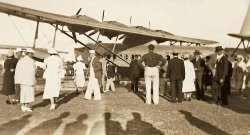
- Charlotte Edith Anderson (Monture)
- ... Nations Reserve, in Southern Ontario, she served with the American Forces. She was the first Native woman in Canada to be trained as a ... in the day, no hospital in Canada would train an "Indian". She applied and was accepted at the New Rochelle Hospital, in New ... Posted by Mudhooks - 11/05/2011 - 11:00am -
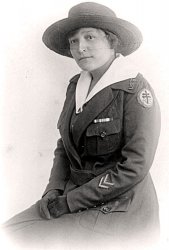
- Ritual Laughter: 1960
- ... Price, chairman of the Department of the Interior's Indian Arts and Crafts Board. Left to right: Chief Iron 'Gus' Shell Necklace ... Sioux; survivors of the Wounded Knee Massacre); Chief Ben American Horse; Chief Frank Kicking Bear (Minnicoujou); and Chief John Saul ... Posted by Dave - 10/28/2019 - 10:20am -
